Well, not exactly. It’s like asking the federal government, during times of a major budget deficit, to arbitrarily print more money. It just doesn’t work that way, or it just can’t. Recently, I sat in on the annual Plumbing Industry Leadership Coalition (PILC), and as the topic of the water conservation as it related to Read more
plumbing hub
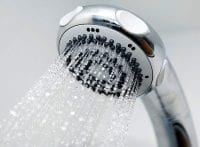
Well, not exactly.
It’s like asking the federal government, during times of a major budget deficit, to arbitrarily print more money. It just doesn’t work that way, or it just can’t.
Recently, I sat in on the annual Plumbing Industry Leadership Coalition (PILC), and as the topic of the water conservation as it related to the California drought came up, I couldn’t help but think that, as we move toward a more water conservative mindset, is it really responsible for governing bodies to legislate lower gallons per flush, for example, without doing its due diligence and conducting the proper research?
In the extreme case of the drought in California, the state has been diligently working to enforce water consumption. State experts have been managing water resources to deal with the effects of the drought and prepare for the next one. As part of the solution, the California Energy Commission approved standards for water appliances, which will save more than 10 billion gallons of water in the first year. Over time, the water savings is estimated to reach 105 billion gallons per year — a savings of more than three times the annual amount of water used by the City of San Francisco.
The energy efficiency and water standards approved require water appliances to consume less water thereby using less energy while performing the same function. The details for each appliance are as follows:
• Toilets and urinals, except those designed for prisons or mental health facilities.
• Toilets shall not consume more than 1.28 gallons per flush and shall have a waste extraction score of no fewer than 350 grams. Urinals shall not consume more than 0.125 gallons per flush. (These facilities have specially-designed toilets and urinals to address security and health issues.)
• Residential lavatory faucets shall not exceed 1.2 gallons per minute flow rate.
• Kitchen faucets shall not exceed 1.8 gallons per minute flow rate and may have capability to increase to 2.2 gallons per minute momentarily for filling pots and pans.
• Public lavatory faucets shall not exceed 0.5 gallon per minute flow rate.
Extreme case such as this call for extreme measures. But often times more low flow legislation across the board can have potentially catastrophic results.

The Plumbing Efficiency Research Coalition (PERC) has announced its intention to launch a Phase 2 study, building upon the results of its successful and much-anticipated Drainline Transport Study (available on the PERC website: http://www.plumbingefficiencyresearchcoalition.org)
Pete DeMarco, senior vice president of Advocacy and Research, The IAPMO Group—and founder of the Plumbing Efficiency Research Coalition (PERC)—says the point of “diminishing returns” with low flow fixtures is dependent on the building, and how water is used in that building. Plumbing systems vary greatly by age, materials, design and quality of the original installation. “For example, the retrofitting of water-guzzling 3.5 gallon per flush (gpf) toilets and 1.0 or higher gpf urinals with high efficiency models in building is happening every day across the country. The overwhelming majority of the plumbing systems in these buildings continue to work just fine after the retrofit, but a few experience problems with chronic clogging of the building drain,” says DeMarco.
According to Ron George, CPD, president, Plumb-Tech Design & Consulting Services LLC, more technical research and increased water rates are needed to address water conservation methods. According to the United Nations Food and Agriculture Organization, more than eight billion people will inhabit the earth by the year 2030, requiring 60% more food and a significant increase in water over today’s capacities. “Increased water rates will give us the funds to support the needed infrastructure improvements and provide incentives for water conservation. We should mandate research and technical data before allowing any politician to reduce water and waste flows to unrealistic levels,” says George.
These new ultra-low-flow fixtures and appliances in conjunction with waterless urinals and greywater systems are creating health and safety problems from drain blockages in the name of water conservation, continues George. Continual reductions of water flows in the plumbing systems of buildings, however, have resulted in the phenomenon known as dry drains, where drain flows may be insufficient to effectively transport solids down the drain.
“There needs to be enough water in the river to float the boats. If we reduce the drainage flow volume and leave the drain pipes the same size then the hydraulic depth of flow will be less,” says George. In older buildings there will likely be more problems than in newer buildings. In new buildings drain sizes can be designed smaller and the minimum slopes can be designed with greater slopes.
On the supply side, the issues are more complex and more concerning. Water quality decreases as the transit time between the point of treatment at the water utility and the point of use in a building increases. The lower flow rates associated with efficient plumbing fixtures and appliances result in lower water velocities in supply pipes, which can contribute to biofilm growth, which in turn can amplify the growth of dangerous pathogens such as legionella. There have been studies that show extremely long water residence times in commercial building supply systems due to oversized pipes and decreased water use. “What we don’t know is to what extent these problems are causing harm,” says DeMarco.
In addition, recent water use reduction efforts are creating an unhealthy environment and a non-sustainable condition for drain line transport, which is a serious health and safety issue. “The arbitrary reductions in fixture flow rates without any technical justification for these reductions is placing drain line transport of solids wastes in serious jeopardy. Water use reductions seem to be out of balance with reality. The arbitrary percentage increment reductions in water usage to gain points seem to have no scientific basis,” says George.
Most experts would agree that water efficiency is not optional. The answer to these problems is not to turn back the clock on the use of water efficient fixtures and appliances. “Water scarcity and declining water quality are only going to get worse in the years to come. We need to work together and determine how we can maintain safety and efficacy while being as efficient as possible,” says DeMarco.
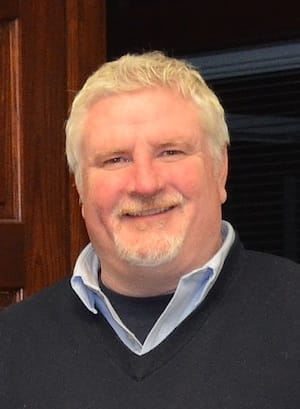 John Mesenbrink is president and co-owner of Mechanical Hub. He has been covering the trades for more than 17 years and has been covering the plumbing & heating industry for more than 12 years.
John Mesenbrink is president and co-owner of Mechanical Hub. He has been covering the trades for more than 17 years and has been covering the plumbing & heating industry for more than 12 years.
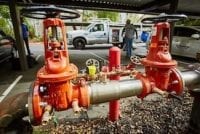
Watts’ Backflow Preventer Retrofit-Spool solution is a replacement for aging or inoperative backflow preventers. The Backflow Preventer Retrofit-Spool solution has a unique outside-the-shutoff valve design that enables a wide range of configuration options. Its custom spool is produced with optional connections, flush ports, branches or tees. Built to order, the solution can be tailored to Read more
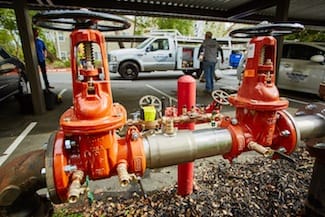 Watts’ Backflow Preventer Retrofit-Spool solution is a replacement for aging or inoperative backflow preventers.
Watts’ Backflow Preventer Retrofit-Spool solution is a replacement for aging or inoperative backflow preventers.
The Backflow Preventer Retrofit-Spool solution has a unique outside-the-shutoff valve design that enables a wide range of configuration options. Its custom spool is produced with optional connections, flush ports, branches or tees. Built to order, the solution can be tailored to meet various job requirements and can be delivered fully assembled or in parts. Most orders ship within 48 hours of receipt.
For more information, visit www.watts.com and http://www.watts.com/pages/whatsnew/retrofit_spool_solution.asp
Woodridge, Ill. — The plumbing industry’s support of Operation Rise & Conquer continued in great force on May 2 as VAMAC, Gerber and Danze teamed together for their first ride through historic Glen Allen, Virginia. The ride raised $7,500, enough to sponsor three veterans through the Adaptive Sports Center program in Colorado. The ride attracted Read more
Woodridge, Ill. — The plumbing industry’s support of Operation Rise & Conquer continued in great force on May 2 as VAMAC, Gerber and Danze teamed together for their first ride through historic Glen Allen, Virginia. The ride raised $7,500, enough to sponsor three veterans through the Adaptive Sports Center program in Colorado.

L-R: Corbin Ensign, VAMAC vice president/owner; Michael Werner CEO and president of Gerber/Danze; and Sgt. Michael J. Frazier, USMC Ret.
The ride attracted participants to Winns Baptist Church in Glen Allen, each of whom rode 50 or 25 miles as individuals or 7 miles in the Family Fun Ride. One of the day’s highlights came after the riders returned and were able to hear more from Sgt. Michael Frazier USMC (Ret). Sgt. Frazier, a wounded veteran who participated in the ride as a hand cyclist, spoke about the benefits of the Adaptive Sports Center program and what it means to him and his fellow soldiers.
“I believe Patriotism is defined in so many different ways,” said Frazier. “When people come together for a ride like this to help others they don’t even know – that’s Patriotism in my eyes. You’re the true heroes.”
Riders and volunteers expressed their enthusiasm for a 2016 event with the hopes of raising even more money for the program. VAMAC’s 2nd Annual Ride for Operation Rise & Conquer will be held April 30, 2016.

A sampling of the many riders who biked the Glen Allen, VA area to raise $7,500 in support of Operation Rise & Conquer.
Operation Rise & Conquer (created in 2014 by the American Supply Association and industry partners APR Supply, First Supply, Hajoca, Oatey, VAMAC, Danze, Gerber and The Wholesaler Magazine) focuses on raising awareness and financial support to help empower and inspire wounded soldiers and veterans to regain confidence and trust in themselves and others. The money raised by Operation Rise & Conquer directly supports these military men and women through the Adaptive Sports Center in Colorado.
The Adaptive Sports Center provides veterans with special equipment needed to participate in summer or winter activities, and serves as a resourceful and motivating way to help these brave heroes take a break from their hospital rehabilitation environments. Participants are exposed to horseback riding, biking, rock climbing, fishing, whitewater rafting, skiing, ice climbing and many other challenging, yet rewarding activities.
To learn more about Operation Rise & Conquer and how your organization can get involved, visit www.OperationRiseAndConquer.org or call Bill Erfort with the ASA at 630-467-000 x212.

Service Agreements (not contracts, “contract” is a dirty word) have been around about as long as service calls. Viewed as an insurance-type agreement where the customer receives bonuses or perks due to their commitment to your company. Businesses offer an array of services for those customers who opt for participating in a service agreement plan Read more
Service Agreements (not contracts, “contract” is a dirty word) have been around about as long as service calls. Viewed as an insurance-type agreement where the customer receives bonuses or perks due to their commitment to your company. Businesses offer an array of services for those customers who opt for participating in a service agreement plan. Most commonly the agreement offers the customer a discounted rate for service and installation, at least one preventative maintenance check throughout the term, and priority scheduling. These simple perks appeal to an educated homeowner or business owner who understands the importance of proactive, as opposed to reactive, maintenance.
• Preventable — At Mr. Plumber, our Service Agreement Customers receive one water heater flush and a whole-home plumbing inspection a year. At this time the technician flushes the water heater of sediment (which is a HUGE problem in south Texas). He also inspects the water heater for safety and efficiency. He will then survey the home and visually inspect fixtures, toilets, appliances and plumbing lines. After the inspection the technician documents his findings on the invoice and informs the customer of his findings. At this time, he will offer any suggestions that could save the customer time, money or energy. If they want any work done at the time, we offer it to them at their discounted rate.
This home inspection allows us to catch some of the plumbing issues that could turn into very big emergencies. It is better for the business and the customer to remedy any plumbing issues BEFORE it’s a catastrophe. Emergency plumbing problems could cause costly damage to the home or business. But, we are not infallible. Naturally, we could go out one day and get an emergency call that evening for something we never could have predicted. It’s best to ensure you’ve completed a thorough inspection and document any issues on an inspection sheet for the customer’s and the office’s records.
• Guaranteed Customer — If you have a customer that pays a small fee every month for their Service Agreement, chances are high you are going to be the first person they call when something goes wrong. Service Agreements are a relationship builder. Each side is putting in some trust and effort. The customer must trust that the service provider will be in business to honor the agreement. The business trusts that the customer will contact them if there are any issues. These customers will be your biggest supporters and best source of obtaining online reviews.
• Revenue Stream — Service agreements offer the business a reliable and predictable revenue stream. If you’re billing monthly (which you should for maximum business benefit) you can expect a certain amount of revenue on a predictable and consistent date.
Service Agreements, clearly, have their place in the service industry. If you are utilizing this business practice, ensure you have a clear and verifiable system in place to track and provide the best customer service experience for your Service Agreements.
 Allie Perez is director of operations, Mr. Plumber / Mr. AC, San Antonio (http://www.mrplumbersa.com). Her interesting viewpoints on the trades can be found on her blog at http://www.mrplumbersa.com/blog. She also is founder of Texas Women in the Trades (TWIT). Visit texaswomenintrades.com.
Allie Perez is director of operations, Mr. Plumber / Mr. AC, San Antonio (http://www.mrplumbersa.com). Her interesting viewpoints on the trades can be found on her blog at http://www.mrplumbersa.com/blog. She also is founder of Texas Women in the Trades (TWIT). Visit texaswomenintrades.com.

“We’re going to win the N.L. Central, and you can quote me on that,” said Chicago Cubs first baseman Anthony Rizzo. The expectations have been set. For the Chicago Cubs, there is an optimism in the air which hasn’t been “felt” in some time. As the Boys of Summer headed north for the regular season Read more
“We’re going to win the N.L. Central, and you can quote me on that,” said Chicago Cubs first baseman Anthony Rizzo. The expectations have been set. For the Chicago Cubs, there is an optimism in the air which hasn’t been “felt” in some time.
As the Boys of Summer headed north for the regular season last week, the Cubs already have started the season off on the winning track by announcing in January that Sloan Valve Co. had joined the Cubs organization as a Legacy Partner and the team’s Official Water Efficiency Partner.

Cubs chairman Tom Ricketts, in a statement, called the partnership “an important move for the Cubs as we look to provide clean and sustainable water solutions for our facilities both in Mesa and Chicago.” The Cubs said the team plans to use Sloan’s products in Mesa, at Wrigley Field and in the new facilities that are part of the Wrigley Field rehab.
“We are pleased to work with and learn from Sloan as we enhance our facilities and build for the future,” said Ricketts.

Sloan will help the Cubs expand its ongoing sustainability efforts and improve fan and player experiences at Sloan Park—and nearby Under Armour® Facility, locker rooms, workout areas—and at Wrigley Field. “This will show customers that high-demand products have to work seamlessly,” said Parthiv Amin, VP of marketing, Sloan.
The Cubs will utilize Sloan’s products—Basys faucets, and other toilets, fixtures and flush valves—in the newly-named Sloan Park in Mesa and plan to integrate inside Wrigley Field and its surrounding facilities as part of the 1060 Project construction—helping the organization expand its ongoing sustainability efforts. In keeping with the sustainability message, the replaced Sloan products at Sloan Park have been removed, redistributed and reused throughout the Mesa area.
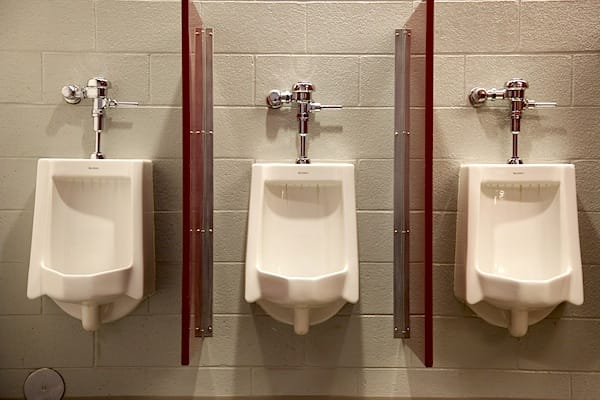
“Water is an increasingly important natural resource, by helping communities and organizations like the Chicago Cubs save water, Sloan helps to raise awareness of water conservation in this country and around the world. Responsible use of water is critical to local communities and to the world. Our partnership with the Chicago Cubs organization gives us the opportunity to help build winning teams through sustainable solutions,” said Jim Allen, president of Sloan.
“Sloan products have been in Wrigley Field since 1914, and this exciting new partnership with the Chicago Cubs helps Sloan tell its story on a major league level.”
Sloan also will have brand presence at Sloan Park and Wrigley Field including designated areas to showcase Sloan products and state-of-the-art water saving technologies along with fixed signage on the visiting team’s bullpen.
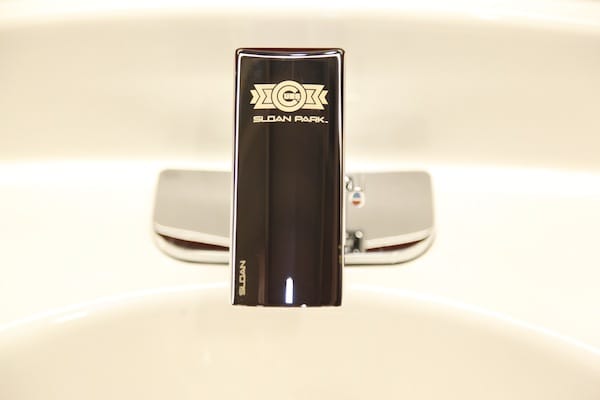
The sponsorship with the Cubs is the company’s first in sports marketing, and it provides “another platform to get the message out, and in the business-to-business arena, it helps Sloan rise above the rest,” said Amin.
Whether you correlate bathroom fixtures with baseball, the partnership makes perfect sense. Sloan’s expertise in water efficiency will help the Cubs reduce their overall environmental impact—especially important in drought prone areas such as Arizona, and, “We are a global organization founded in Chicago, so partnering with another iconic Chicago brand is a natural fit,” said Allen.
